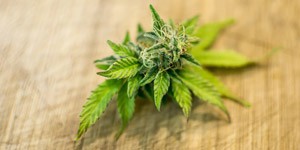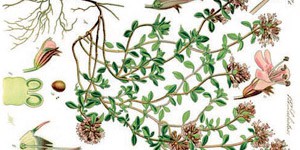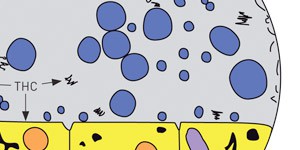Flavonoids are secondary polyphenolic metabolites that commonly have a ketone group and yellowish pigments, after which they are named (from the Latin flavus, “yellow”). Flavonoids can be divided in four main groups: flavonoids, isoflavonoids, neoflavonoids and anthocyanins. Nevertheless, for the sake of simplicity, we will refer to them all with the common term of flavonoids.
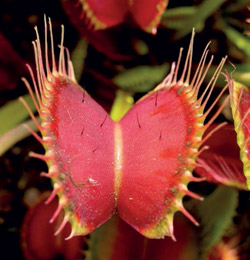
Carnivorous plants as the Dionaea muscipula
contain a type of flavonoid in their flowers
and leaves that attracts the insects they will eat.
Flavonoid biosynthesis follows the phenylpropane metabolic pathway, in which the cumaril-SCoA is formed from the aminoacid known as phenylalanine, which is mixed together with the malonil-CoA form a group of substances known as chalcones. These are the backbone of every flavonoid and anthocyanin's biosynthesis.
This reaction is catalysed by the chalcone synthase enzyme, which belongs to the family of the polyketide synthases (PKS). This PKS family also contains olivetol synthase, responsible for the synthesis of cannabinoids.
Flavonoids cover a wide range of functions in plants, although they mainly act as yellow pigments in petals and leaves to attract pollinating insects. They might also appear as bluish pigments (anthocyanins) to receive certain wavelengths of light, which permits the plant to be aware of the photoperiod. Many of these flavonoids also protect the plant by being involved in the filtering of ultraviolet light. On a cellular level, flavonoids act as regulators of the cellular cycle. Some of them are synthesised in the plant's roots and have crucial roles in establishing symbiotic fungi or mycorrhyzas, while at the same time they fight the infections caused by pathogenic fungi.
Flavonoids have relevant pharmacological activities on 'in vitro' models, such as; antioxidant, anti-inflammatory, antiallergic, antibiotic, antidiarrheal and against cancer. It has not been possible to prove an antioxidant activity on 'in vivo' models, just as it has not been possible to relate it to any effectiveness against cancer. Some studies seem to indicate that a diet rich in flavonoids can diminish the risk of cancer, but there are no significant statistics regarding this claim.
We can find different types of flavonoids in the Cannabis plant, such as; cannflavine A, cannflavine B, cannflavine C, vitexin, isovitexin, apigenin, kaempferol, quercetin, luteolin and orientin. The distribution of these in the plant, varies depending on the type of flavonoid, but none have been found in the root system of the Cannabis plant. The total content of flavonoids in the Cannabis' leaves and flowers can reach 2,5% of its dry weight, while it is almost non existent in seeds and roots. Some studies suggest that the distribution and concentration of flavonoids in the Cannabis plant can be useful from a chemical and taxonomic point of view. The following is a brief description on the therapeutic properties of these flavonoids. Most of these compounds are soluble in water, which could explain certain therapeutic effects of the herbal infusions and the decoctions in Cannabis water, as the cannabinoids are partly soluble in water.
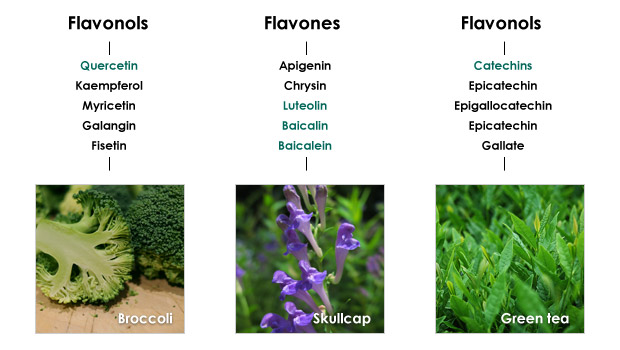
Cannflavins A, B and C
They have anti-inflammatory activity due to the fact that they inhibit the prostaglandins' inflammatory pathway. This mechanism is shared with other terpenoids which are present in the Cannabis plant, providing a better synergy and anti-inflammatory effect to that coming from cannabinoids.
Vitexin and Isovitexin
Therapeutic applicability for gout, inhibiting the thyroid peroxidase.
Kaempferol
It seems to have an antidepressant effect. A rich diet in kaempferol may reduce the risk of cancer and some coronary diseases. Although some are opposed, other theories state that Cannabis seems to have certain antidepressant effects in some cases, so it could be that there is a synergistic effect coming from the combination of kaempferol and cannabinoids.
Apigenin
It has shown to decrease the secondary effects of ciclosporin A, an immunosuppressive administered during organ transplants to avoid the rejection of the transplanted organ. It has also been proven that apigenin is one of the few substances capable of stimulating the monoamine transporter, altering the neurotransmitter levels. It has recently become clear that apigenin acts as an anxiolytic and sedative on the GABA receptors. The fact that this effect is shared by the cannabinoids bring us to a possible synergy between axiolict and sedative effects of cannabinoids.
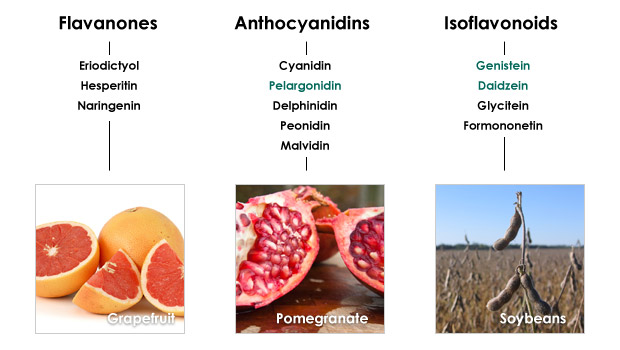
Quercitin
It inhibits viral enzymes and it can have antiviral effects. It also inhibits the production of prostaglandins, acting as an anti-inflammatory. The quercitin can have synergy with the cannabinoids too by increasing the anti-inflammatory effects. A recent study suggests quercitin may have therapeutic applicability in treating fibromyalgia, due to its anti-inflammatory effects. As has been shown, Cannabis has therapeutic effects in managing fibromyalgia, which could prove the synergy between quercitin and Cannabis. Similarly, quercitin inhibits the monoamine oxidase enzyme (MAO), which is involved in the metabolism of neurotransmitters and pharmaceuticals. This factor should be to be taken into account, with regards to possible interactions with particular pharmaceuticals.
Luteonin and Orientin (luteonin glucoside)
Both luteonin and orientin have shown to have pharmacologic effects as antioxidants, anti-inflammatories, antibiotics and as agents against cancer in preclinical studies. They can also have synergy with cannabinoids.
In this article, we have verified that there are other types of active substances in the Cannabis plant, and that the effects of this plant could clearly be influenced by the possible synergy between the effects of cannabinoids, terpenes and flavonoids. Therefore, the anti-inflammatory effect of the Cannabis plant could be most affected by a probable synergy, due to the fact that the three groups of compounds converge in similar or complementary mechanisms of action.
